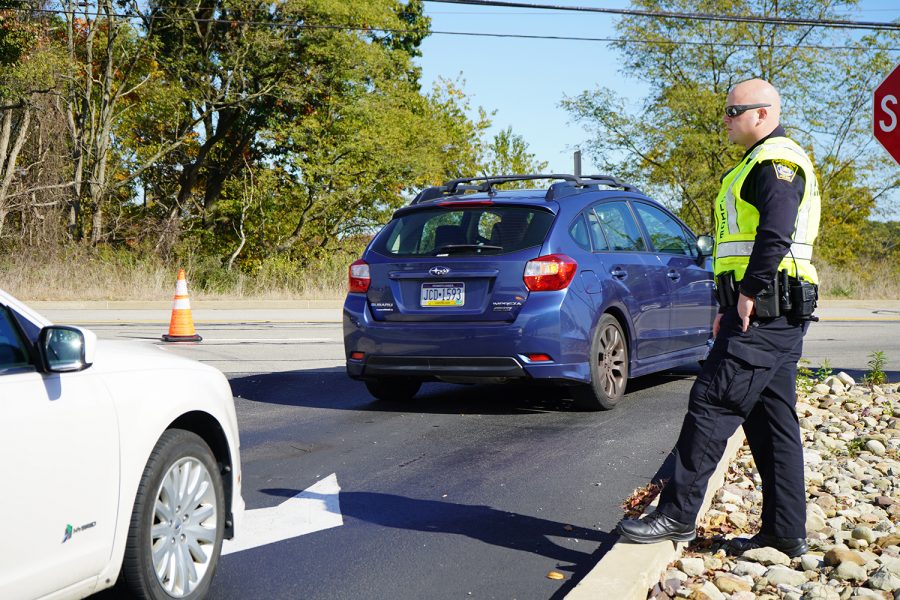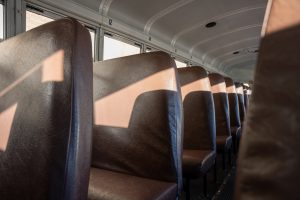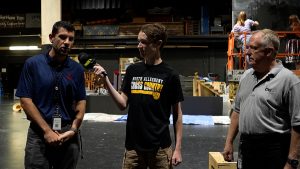Click It or Ticket
As students exited the campus yesterday, the McCandless police performed a seat-belt check.
The seat belt safety check that took place on Thursday aimed to teach a vital lesson in exchange for a minor inconvenience.
October 25, 2019
Driving out of NASH after a school day is usually a slow-going process, but yesterday’s line of traffic had a meaningful purpose. As students were leaving the campus yesterday, the McCandless police stood at the parking lot exits and checked each car to see if students were wearing their seatbelts.
But the event did not come as a surprise to the student body. Minutes before the 2:15 bell, Main Office Secretary Mrs. Foglio came on the PA said,” Stops are being conducted to ensure all students are wearing their seatbelts. Traffic citations will be issued to all drivers or passengers not in compliance”. Because of the warning, all students were still wearing seatbelts and no citations were written up.
Julia Moose, a senior at NASH, found it strange.
“I thought it was unusual to announce the safety check before conducting it because it undermines the entire purpose of doing it,” Moose said. “If it wasn’t announced, they could have found out who was actually being unsafe.”
For officer Kyle Allshouse, a patrolman in the McCandless Police Department traffic unit, the safety check was timed appropriately.
“This seatbelt check is in reference to National Teen Driver Safety Week, a campaign to prevent teen injuries and deaths on the road,” Allshouse said. “With the permission of your principals, we came up here to conduct a seatbelt check.”
This is the 12th year of National Teen Driver Safety Week, which takes place from October 20th to the 26th.
“We hope to pass along to everyone, especially as everybody is learning how to drive, that you as the driver are responsible for everyone inside the vehicle,” Allshouse said.
Cars are safer than ever before, but most of these safety features such as emergency braking and blind-spot monitors are made to prevent crashes, not protect the driver during a crash. Airbags are useful for reducing injury but do not stop the driver or passengers from going through the windshield, the most dangerous and fatal occurrence during an accident.
“Wearing a seatbelt prevents further injury in an accident as long as it’s worn properly,” Allshouse added. “If you’re under the age of 18, you and all other passengers are required by law to wear a seatbelt in the vehicle at all times.”
In 2017, 37,133 people were killed in motor vehicle accidents in the U.S.. 2,364 of those people were teenagers ages 16-19. Of the people in these accidents, 47% were not wearing seatbelts during the crash.
“Everybody should be in compliance with wearing their seatbelt,” said NASH School Resource Officer Todd Ray. “At NASH, both the driver and the front seat passenger are typically wearing their seatbelt, but the passengers in the back seat tend to not wear them.
As they are nearly three times more likely to be in a fatal car accident than those 20 years or older, teens are at high-risk when driving. This is especially true for males ages 16-19 as their motor vehicle death rate is twice as high as females of the same age, making them six times more likely than any other group to be in a fatal crash.
These statistics should be eye-opening to students, especially with 12 motor vehicle accidents involving NASH students occurring already this year — three of which were hit and runs in the vicinity of the high school.
“The last accident I worked was a six-car pileup,” Ray added. “Five of the cars had to be towed and all six drivers were students. We want to do everything we can to make sure that people are wearing their seatbelts to keep everyone from getting injured.”
In light of the recent accidents, yesterday’s event was met with full approval by Ray.
“Click It or Ticket is a campaign that is typically done statewide,” he said. “We’re just trying to ensure that all students are wearing their seatbelts before they leave the high school.”
For senior Geo Ivory, the lesson was taken to heart.
“I feel that it’s important because it helps build good habits for new drivers and will help keep people safe,” Ivory said.














